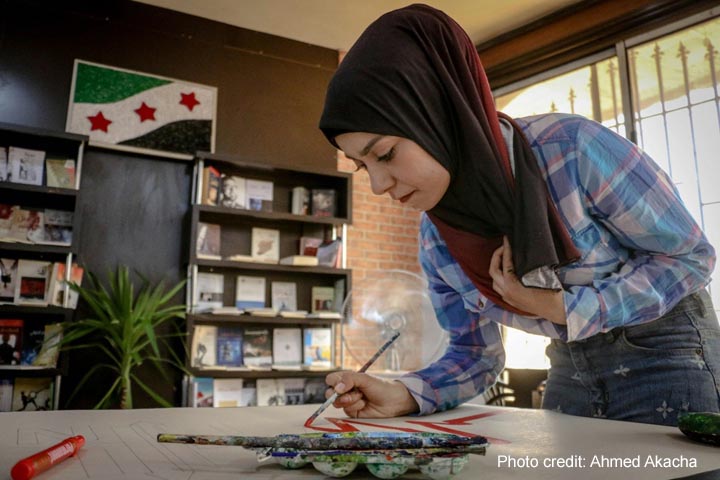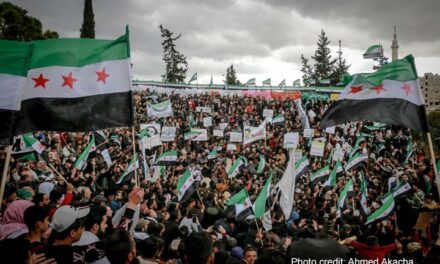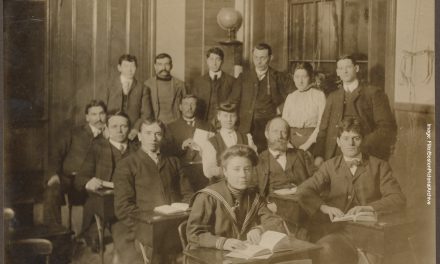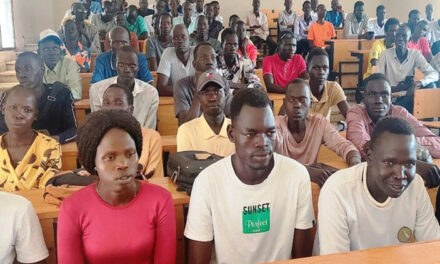This blog was written by Dr Basma Hajir, Lecturer in the School of Education, University of Bristol. Basma’s research interests lie in Education in Conflict settings and emergencies, refugee education, education for social justice and education and settler-colonialism.
“Today, we have a beginning, and like all beginnings, it is difficult and faltering, but it holds the potential to be liberating”
(Al-Haj Saleh, 2025).
Following the collapse of Assad’s regime, Syria faces the challenge of navigating through a new beginning: one fraught with uncertainties yet brimming with possibilities. This moment not only marks the end of a dictatorship but also offers Syrians a chance to rethink the systems that shape their society. Among the many areas for post-war policies and strategies, higher education (HE) is a vital sector that could contribute to addressing the grievances of the past and paving the way for a more peaceful future. Drawing on my 2022 research that amplified the voices of Syrian youths, this piece explores the role that HE could play in peacebuilding and recovery in Syria.
Improving living conditions: A material basis for a dignified life
My research highlights the urgent need to link the role of HE in Syria with creating a material basis for dignified life and pursuing a positive qualitative difference in the living conditions of youth. It argues for the urgency for HE to play a role in addressing the depth of the socio-economic challenges facing Syrian youth today. My participants envisioned the peacebuilding role of higher education (HE) largely through economic and social lenses, emphasising the urgent need to: 1) align HE with labour market needs, 2) foster partnerships and collaborations between universities and other sectors, organisations and local communities, and 3) improve the quality of HE, including curriculum, pedagogy, and assessment.
Given that my research data was collected in 2019-2020 from students in regime-controlled areas, it was unsurprising that the political dimension of HE’s role was less emphasised. Syrian students lived under intense surveillance, pervasive censorship and a political ‘condition of impossibility’ where seemingly innocuous words could be fraught with political danger. One master’s student recounted being asked to revise the proposal of his physics-related thesis because he used the Arabic word ‘nezam’ to refer to ‘system’ (in a physical sense). However, since ‘nezam’ also means ‘regime’ in Arabic, a term used by the opposition to imply the Syrian government’s illegitimacy and dictatorial nature, the student was required to find an alternative word that avoided such connotations.
Still, while the areas identified by my participants might appear apolitical, they reflect the deeply intertwined nature of Syria’s socio-political and economic struggles.
The intertwined nature of Syria’s socio-political and economic struggles
One major and direct trigger of the 2011 popular uprising in Syria was severe political repression. However, it is important not to reduce the Syrian revolution to a political struggle against authoritarianism while ignoring socio-economic roots. The Syrian uprising is deeply entrenched in socio-economic realities combined with geo-political and historical factors. Looking at the economic model employed since the 1970 coup that brought Hafez al-Assad to power and the economic liberalisation accelerated by Bashar, Heydemann (2007) uses the term ‘authoritarian upgrading’ to refer to how the economic reforms undertaken were meant to consolidate Assad’s authoritarian rule. However, despite the fact that the GDP more than doubled from 2005 to 2010, social indicators revealed an increase in poverty, unemployment, and social inequalities. Those who benefited from the resulting economic growth were a minority of economic elites. Meanwhile, about 7 million Syrian (33 percent of the Syrian population) were below the poverty line in 2007. 62 percent of poor people were in rural areas, and 38 per cent were in urban areas. With that, “the authoritarian upgrading project has largely failed” and those who experienced the resulting impoverishment were at the forefront of the uprising in 2011. Geographically speaking, the uprising started in Dar’a, Idlib and other towns and rural areas that benefited historically from agricultural reforms but were then marginalised under Bashar-al-Assad. Poignantly expressed by Bonfatti (2017):
“We see time and again a close correlation between the neglected state of rural areas and the peripheral outbreak of the Syrian revolution.”
In my lived experience in Syria, I recall, back in 2009-2010, having to complete a mandatory teaching service in a rural area in Northern Aleppo. I was shocked to realise that the two schools I taught at had no water, electricity, or even toilets that students could use. I later realised that when students asked to use the toilet, they were actually going home and returning to class. These conditions would have been unthinkable in state schools in urban areas. This structural injustice in education raises a moral obligation. Education policymakers in post-dictatorship Syria must devise and implement policies to address these disparities.
As for HE, and against the backdrop of the gradual privatisation of schools and universities, population growth, increasing literacy rates, free public HE, and more and more students graduating from private HE institutions, the number of educated Syrian youth expanded with no labour market able to absorb them. A strong sense of dissatisfaction among youth with the adopted state-led development model prevailed. In Aleppo, anti-regime demonstrations were first started by student-led collectives at the University of Aleppo. In that period, there were also demonstrations by students at the University of Damascus. The Syrian popular uprising, then, was also an uprising of those who became unable to tolerate their economic and social marginalisation and wanted to improve their living conditions.
HE’s contribution to ‘infrastructures for peace’
It is, therefore, important to avoid denouncing participants’ perception of the peacebuilding role of HE through economic and social lenses as ‘false consciousness’ for failing to account for the political role of HE in peacebuilding. Their perspectives represent what is possible to do in the face of oppressive political reality. Today, with the authoritarian regime overthrown, critical political issues are just as paramount. The recognition and representation of diverse Syrian groups in staff, committees, and leadership positions, the safeguarding of academic freedom, and fostering spaces for political deliberation must also be prioritised.
Most importantly, given the specificity of the Syrian context, working for peacebuilding through HE is more about building ‘infrastructures for peace’. It is about avoiding neglecting social and economic questions at the expense of purely political ones. In Syria, seeking to improve youths’ living conditions is a political endeavour that contributes to addressing major grievances at the heart of the Syrian conflict. Syrian students are in bad need of programmes and initiatives that promote their employability ‘as a means of survival and sustenance’. This does not take away from the potential of these same initiatives to contribute to collective social interests and recovery. Improving living conditions also strengthens young people’s ability to engage in political resistance to different forms of structural domination.
As for practical ways forward, below are points for reflection.
- Equity and reparative justice: HE in Syria must ensure equal – and even greater affirmative – educational provision to poor, marginalised youth, especially those from rural areas who were most neglected before the war, and are now most severely impacted by the conflict. To address this point theoretically, I invite scholars interested in the Syrian context to approach it from the lens of ‘reparations’. This lens pushes us to consider the relationship between past, present and future in understanding injustice and its repair. On a practical level, increasing the number of enrolled students from impoverished areas will require more targeted investments in primary and secondary education in rural areas. It therefore becomes imperative to think about the need for coordination between the Ministry of Education and the Ministry of HE in Syria. They must work closely and set strategies together.
- Integrative policies and cross-sector collaboration: It is critically important that HE structures are fundamentally re-designed to create opportunities to connect students’ potential, capacities, and aspirations to addressing social needs and demands. To do that, it is worth considering integrative and multi-sector collaborations and partnerships that could enable various student engagement models to be considered for implementation, such as ‘service learning’ or ‘accredited volunteering’. A structured period can be integrated within the HE curriculum where students collaborate with organisations to gain hands-on experience while contributing positively to the community.
- Economic restructuring: To address unemployment, Syrians must push for plans towards ‘more equity-conscious development economics’. Instead of perpetuating neoliberal capitalist logic that benefits the elite, economic experts in Syria must prioritise the need to create more job opportunities, centre the public good and serve the interests of the largest segments of society.
- Quality enhancement: Policymakers must target investments to improve the quality of education in public universities, including revising curricula and modes of assessment, ensuring libraries and laboratories are well-equipped with resources, tools, and equipment, improving digitalisation and affording members of the university access to journals and electronic libraries.
- International efforts: To achieve this, a dedicated effort is required by the international community, including governments and international non-governmental organisations (INGOs), to provide resources and support services. Most importantly, the international academic community is morally responsible for interrogating the exclusion of Syrian academics and students resulting from non-targeted sanctions and their impact on the HE sector in Syria.
- Addressing brain drain: Policymakers in Syria must address the brain drain crisis. They must develop strategies to encourage repatriation and find a way to incorporate diaspora into the post-conflict HE sector.
The points above are not comprehensive, definitive, or prescriptive. They are not without complexity, challenges, and limitations. However, I hope they offer starting points for envisioning the role of HE in post-conflict Syria. Rather than an easy task or a final destination, peacebuilding through HE in Syria will always be an ever-evolving incremental journey towards an envisioned outcome of inclusive institutions embedded in an equity-conscious socio-economic and political sphere. This journey requires commitment from all stakeholders, local and international. Most importantly, the voices of Syrian youth who have borne the brunt of the conflict must guide the way forward.





